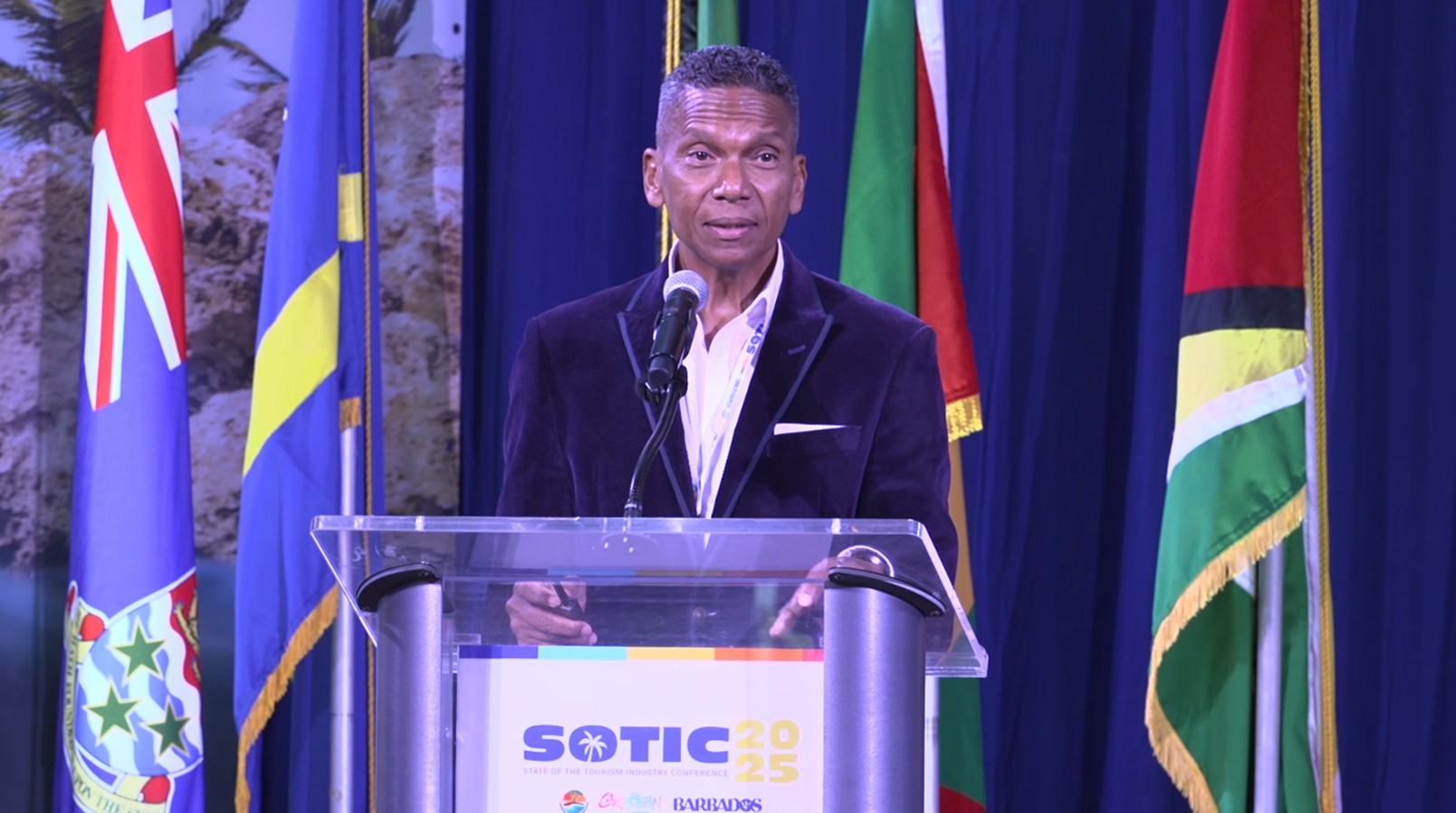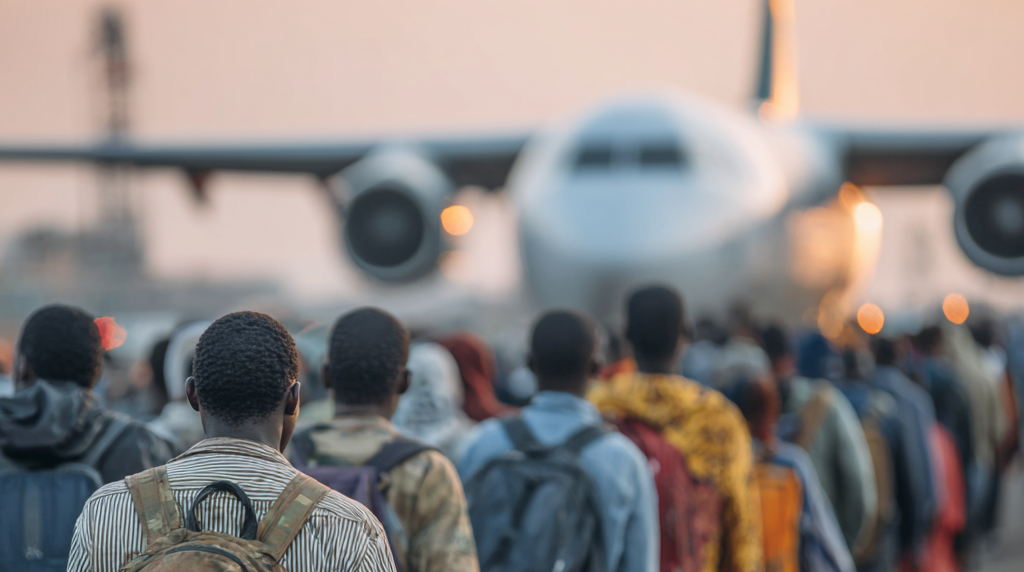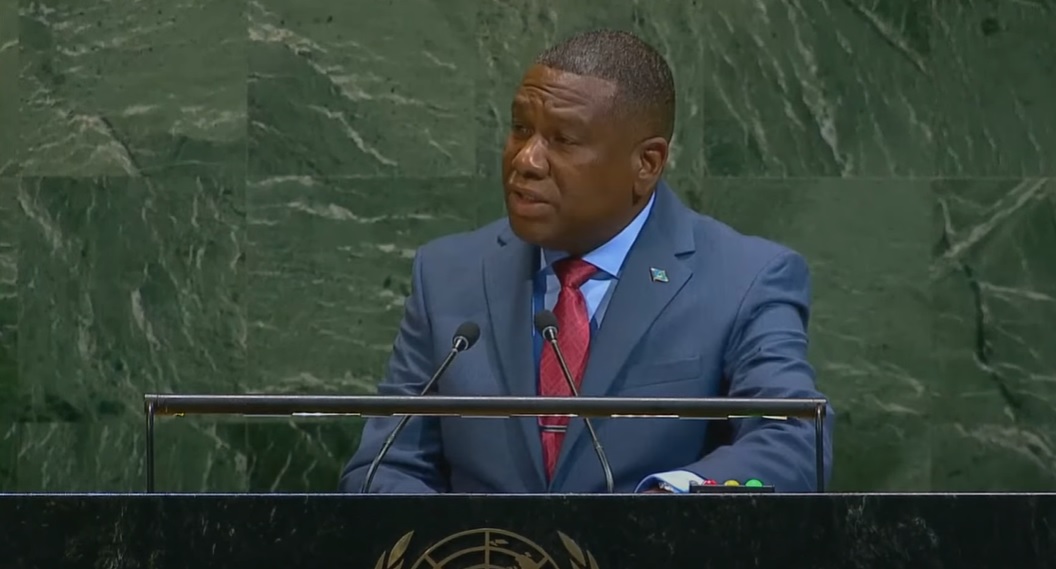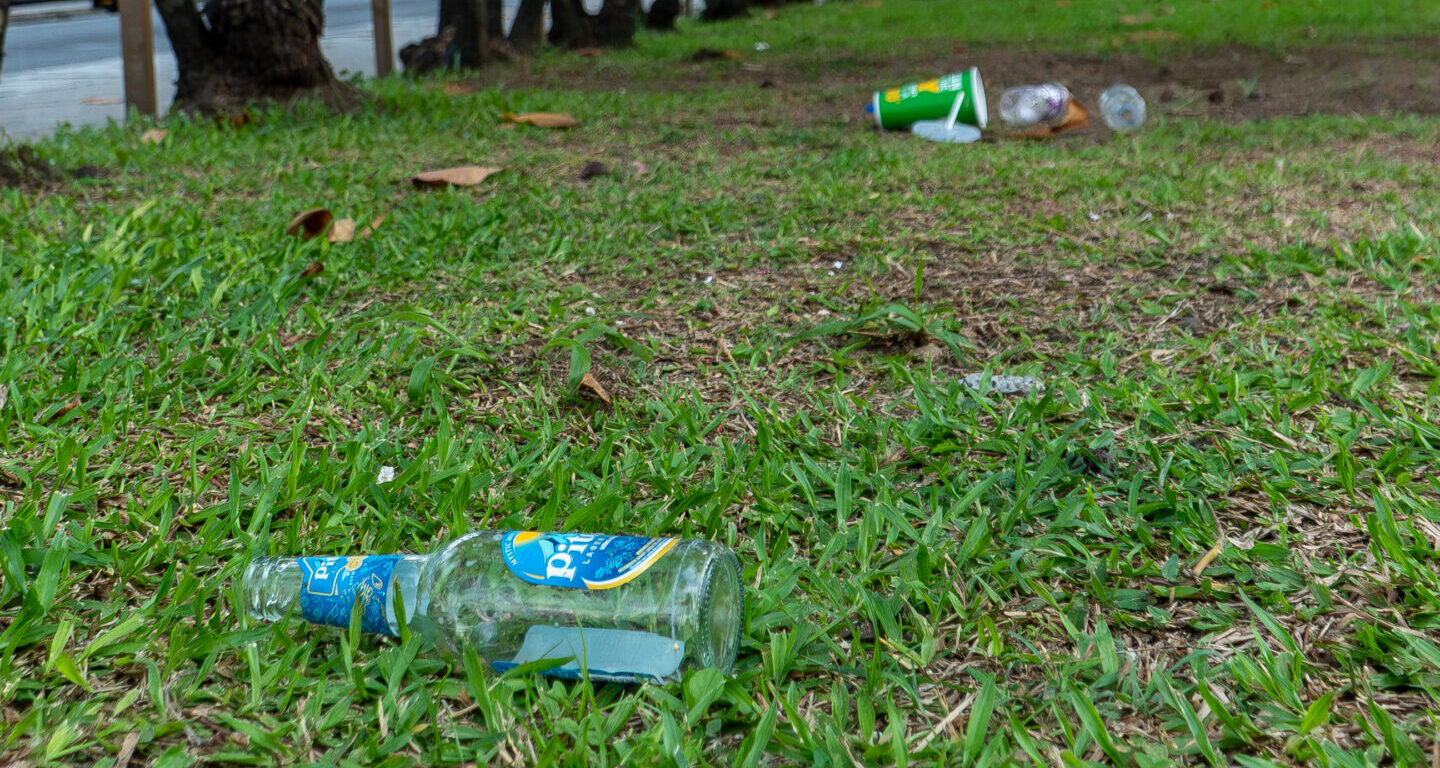The Micoud South constituency, traditionally a bastion of the United Workers Party (UWP), is set to witness a fiercely contested general election as the Saint Lucia Labour Party (SLP) unveils its latest candidate, Dr. Shanda Harracksingh. A medical professional and native of Micoud, Harracksingh was officially introduced on October 5, 2025, at the Micoud Playing Field. The event reportedly drew one of the largest crowds in the SLP’s recent history, signaling a potential shift in voter sentiment. Harracksingh faces a formidable opponent in Allen Chastanet, the UWP’s political leader and current Member of Parliament for the constituency. Since 1997, Micoud South has remained under UWP control, largely due to the enduring legacy of the late Sir John Compton. In her inaugural address, Harracksingh acknowledged the challenges ahead but emphasized the need for change. She criticized Chastanet for his prolonged absence from the constituency, declaring, “We have given him several chances. It is time to turn the page. No more excuses. It is time for change.” Harracksingh outlined her vision for the constituency, focusing on elderly care, agricultural development, and infrastructure improvements. She pledged to establish an elderly care center, enhance road access for farmers, and promote agro-processing initiatives. “I am a daughter of the soil,” she asserted, “and I will deliver for this community.” As the election season heats up, Micoud South emerges as a critical battleground, testing whether voters will remain loyal to the UWP or embrace the SLP’s message of renewal.
标签: Saint Lucia
圣卢西亚
-

Chris Dehring sees hope for West Indies cricket through sports tourism
Despite recent struggles on and off the field, Cricket West Indies CEO Chris Dehring has outlined an ambitious plan to revitalize Caribbean cricket through sports tourism. Speaking at the State of the Tourism Industry Conference (SOTIC) 2025 in Barbados, Dehring addressed the financial challenges and opportunities facing the region’s beloved sport. Recent setbacks, including a revised 2026 cricket calendar and poor international performances, have raised concerns about the future of West Indies cricket. However, Dehring remains optimistic, citing the enduring passion of Caribbean fans as a foundation for recovery. He emphasized the importance of leveraging sports tourism to attract global attention and investment. Key initiatives include the development of a 20-acre world-class facility in Antigua, featuring a cricket ground, high-performance center, and a transformed “Sticky Wicket” restaurant into an elite cricket academy and museum. Dehring also called on the Caribbean corporate community to invest in cricket, highlighting the sport’s potential to benefit the entire region. With the global sports tourism market projected to reach USD 645.76 billion by 2025, this strategy could provide a much-needed financial boost to West Indies cricket.
-

OPINION: What cannabis legislation can teach us about foreign direct investment (Part 2)
In the competitive landscape of foreign direct investment (FDI), Saint Lucia and other Caribbean nations offer substantial tax concessions to attract investors. These incentives include VAT relief on building materials, income tax exemptions, property tax waivers, and customs duty exemptions on imports. Such measures are part of a broader strategy to stimulate economic growth and job creation. However, the International Monetary Fund (IMF) has raised concerns about the sustainability of these incentives, noting that the cost per job in the formal sector can be as high as $2,500. Research also indicates that some countries forfeit up to 16% of their annual GDP through tax incentives, with limited tangible benefits. Despite these criticisms, proponents argue that without such incentives, investment and job creation would stagnate. To address these challenges, the Regulated Substance Authority (RSA) and other stakeholders are focusing on sector-specific incentives that prioritize corporate social responsibility, environmental protection, and compliance with national and international laws. Additionally, efforts are underway to improve the ease of doing business in Saint Lucia, addressing issues such as limited access to financing, weak insolvency mechanisms, and high energy costs. The RSA is also working to integrate traditional communities, such as the Rastafari, into the burgeoning cannabis industry, ensuring that development does not displace local stakeholders. The consultative process undertaken by the RSA serves as a model for broader legislative and policy initiatives, emphasizing public engagement and transparency. As Saint Lucia navigates the complexities of FDI, balancing economic growth with sustainable development remains a critical challenge.
-

LETTER TO THE EDITOR: 28 years of governance — the record speaks for itself
Over the past 28 years, the Saint Lucia Labour Party (SLP) has held power for 18 years, yet the nation’s progress remains stunted. Critical sectors such as infrastructure, agriculture, tourism, healthcare, and national security have languished under SLP’s governance. The southern region, in particular, has been systematically neglected, perpetuating poverty and dependency. SLP’s reliance on short-term handouts, exemplified by the failed Youth Economy initiative, has left the youth disillusioned and without sustainable opportunities. In contrast, the United Workers Party (UWP) governed for only ten years, a period marked by unprecedented challenges. From Hurricane Dean in 2007 to the COVID-19 pandemic in 2020, UWP navigated multiple crises while maintaining economic stability, paying salaries, and ensuring the continuity of essential services. Under UWP’s leadership, significant infrastructure projects, including the development of road networks, were realized, fostering commerce and tourism. UWP’s 20/20 Vision Plan emphasized systemic empowerment across agriculture, education, and infrastructure, contrasting sharply with SLP’s focus on temporary fixes. The record is clear: SLP’s prolonged governance has yielded minimal progress and growing insecurity, while UWP’s tenure, despite adversity, delivered tangible development and hope for Saint Lucia’s future.
-

EDITORIAL: Of free movement, and stalled promise
The ongoing discourse on free movement within the Caribbean has intensified, with Barbados and three other nations spearheading efforts toward full implementation. However, this ambitious initiative raises critical questions about whether the process aligns with its lofty promises. The journey toward regional integration began in 1965 with the establishment of the Caribbean Free Trade Association (CARIFTA), aimed at fostering economic ties by reducing trade barriers. This evolved into the Caribbean Community (CARICOM) in 1973, formalized by the Treaty of Chaguaramas, which sought deeper integration across labor, services, capital, and policy coordination. The CARICOM Single Market and Economy (CSME), introduced in 2001, further advanced these goals by enabling the free movement of skilled workers and businesses across member states. Despite these strides, the CSME’s implementation, now 24 years old, remains fraught with inefficiencies. While CSME travelers can enter partner countries without work permits, their passports are stamped to prohibit employment, forcing many to navigate lengthy regularization processes. One applicant reported spending over four weeks securing necessary documentation, during which they were unable to earn income or contribute to the host country’s economy. These delays not only burden travelers but also deprive recipient countries of immediate economic benefits. Challenges extend beyond employment, with difficulties in transferring funds and accessing essential services further complicating regional integration. To address these issues, experts suggest conducting surveys of early travelers to identify pain points and inform policy adjustments. Additionally, establishing a centralized communication system between countries could enhance transparency and coordination. Streamlining subsidiary processes, such as bank account creation and insurance registration, would also alleviate the hardships of inter-island travel. With thoughtful planning and execution, the free movement initiative can achieve its potential, fostering greater regional unity and prosperity.
-

Diplomacy over firepower: Saint Lucia and CARICOM weigh in on a divided region
As geopolitical tensions between the United States and Venezuela intensify, Caribbean nations, led by Saint Lucia, are rallying for dialogue and reaffirming the region’s status as a ‘Zone of Peace.’ During his address at the United Nations General Assembly, Saint Lucia’s External Affairs Minister, Alva Baptiste, emphasized the importance of diplomacy and peaceful resolution of conflicts, particularly referencing the 2014 declaration by Latin American and Caribbean leaders that established the region as a peace zone under the principles of the UN Charter. Baptiste expressed concern over the escalating tensions between Venezuela and the US, urging both nations to avoid violence. He also highlighted the need for a peaceful resolution to the Venezuela-Guyana border dispute and called for an end to the US embargo on Cuba. Additionally, Baptiste underscored the role of small nations in advocating for non-violent diplomacy and addressing regional crises, such as the ongoing turmoil in Haiti. CARICOM leaders, including Barbados’ Prime Minister Mia Mottley and St. Vincent and the Grenadines’ Prime Minister Ralph Gonsalves, echoed these sentiments, warning against unilateral militarization and stressing the importance of regional stability. Meanwhile, Trinidad and Tobago’s Prime Minister Kamla Persad-Bissessar offered conditional support for US military operations in the Caribbean, citing a reduction in crime as a positive outcome. Back in Saint Lucia, Police Commissioner Verne Garde emphasized the importance of strengthening border security to combat illegal trafficking, while maintaining regional collaboration with neighboring nations. The collective call for peace comes amid recent confrontations between the US and Venezuela, including accusations of illegal incursions and military strikes in the Caribbean Sea.
-

Israel confirms signing phase one of Gaza ceasefire deal with Hamas
The Israeli government has officially confirmed the signing of the first phase of a ceasefire agreement with Hamas, marking a significant step toward ending the prolonged conflict in Gaza. The war, which has claimed the lives of over 67,000 Palestinians over two years, has seen intense negotiations culminating in this pivotal deal. The agreement was finalized in Sharm el-Sheikh, Egypt, on the morning of October 9, following three days of rigorous discussions, as reported by Israeli government spokesperson Shosh Bedrosian. This initial phase aligns with U.S. President Donald Trump’s 20-point plan to resolve the conflict. Key provisions include the release of the remaining Israeli captives in Gaza—20 of whom are believed to be alive—within 72 hours, in exchange for Palestinian prisoners. Additionally, Israel is required to withdraw its troops to a mutually agreed-upon line. The ceasefire is set to take effect 24 hours after Israel’s Cabinet ratifies the agreement, expected later this evening. Once the 24-hour period concludes, the 72-hour window for the captives’ release will commence. However, the Israeli spokesperson clarified that Palestinian leader Marwan Barghouti will not be part of the prisoner exchange, a decision likely to provoke discontent among Palestinians. Furthermore, Israel will retain control over more than half of Gaza despite the troop withdrawal stipulated in the deal.
-

Are our waste habits tarnishing the country’s beauty?
Beneath the lush landscapes and pristine beaches that make Saint Lucia a Caribbean paradise lies a growing environmental crisis—widespread littering and improper waste disposal. Dr. James Fletcher, Saint Lucia’s former Minister for Sustainable Development and current CARICOM Climate Envoy, has highlighted the island’s struggle with roadside garbage, polluted rivers, and beaches strewn with plastic. Despite its reputation as ‘The Helen of the West Indies,’ the island’s waste problem is among the worst in the region, threatening both its natural beauty and public health. Fletcher emphasizes that the issue extends beyond aesthetics, with blocked drains causing flooding, plastic waste harming marine life, and food waste attracting pests. He calls for a fundamental shift in public behavior, supported by stronger policies and affordable alternatives to single-use plastics. While initiatives like the Styrofoam and Plastics (Prohibition) Act and private sector efforts, such as Massy Stores’ plastic bag charge, have shown progress, Fletcher stresses the need for comprehensive solutions, including education, awareness campaigns, and innovative packaging made from local materials like banana stems or bamboo. The challenge, he notes, lies in changing entrenched habits, particularly among adults, to ensure long-term sustainability.
-

Gregory Sinaise, proudly continuing the Kwéyòl heritage legacy
The vibrant community of Belle Vue in north Vieux Fort, Saint Lucia, is widely recognized as the cultural capital of the island. Known for nurturing cultural legends such as the late Rameau Poleon and Patrick Gilo Benjamin, as well as the 2024 Groovy Monarch Sly, Belle Vue is a hub of traditional music, dance, and celebrations. Recently, the community honored one of its most cherished cultural figures, Gregory Sinaise, as part of its Kwéyòl Heritage Month festivities. Sinaise, a celebrated singer, musician, and lyricist, is a pillar of Kwéyòl heritage and a respected figure in Saint Lucia and the French diaspora. His contributions to the annual Kwéyòl Song Competition, including victories in 2014 and 2015, have cemented his legacy. Sinaise’s hit song ‘Lakouyante,’ a fusion of Zouk and Cadasse rhythms, remains a national favorite. In an interview with St. Lucia Times, Sinaise expressed his pride in his roots and his commitment to preserving Kwéyòl culture. He emphasized the importance of teaching Kwéyòl in schools and making resources like dictionaries more accessible. Sinaise, who is currently working on a new album, plans to continue spreading Kwéyòl culture through his music, even as he considers stepping back from the Kwéyòl Song Competition after this year.
-

What we lose when we forget Creole
Rhyesa Joseph, an educator, political scientist, and cultural advocate, emphasizes that Saint Lucian Creole culture extends far beyond the annual Mwa Éwitaj Kwéyòl celebrations. Her lifelong dedication to cultural preservation stems from her upbringing in Vieux Fort and Mon Repos, where she was immersed in authentic Saint Lucian traditions through storytelling, music, food, and community life. Through her research, Joseph has observed the gradual erosion of these cultural practices, driven by rising individualism, generational disconnects, and economic pressures that keep families apart. In an interview with St. Lucia Times, Joseph reflects on the state of the Creole language, its intrinsic values, and the urgent need for its preservation. Joseph highlights the dual nature of Creole’s current usage. While there have been some advancements, such as limited bilingualism in professional settings, the language’s overall usage has declined. She criticizes the superficial treatment of Creole, often relegated to aesthetic purposes or confined to October celebrations, rather than being integrated into year-round education and awareness. Beyond language, Joseph underscores the importance of traditional values and systems, such as Koudmen, a cooperative assistance model that once defined Saint Lucian communities. These systems fostered collective responsibility and a shared ethic, which are now threatened by societal fragmentation and external influences. Addressing the argument that Creole lacks global marketability, Joseph dismisses it as generational propaganda rooted in colonial prejudices. She explains how colonization sought to strip people of their identity, marginalizing Creole as the language of the “uneducated.” This historical stigma persists, perpetuated by an education system designed for English speakers. To combat this, Joseph advocates for daily practice, learning resources, and institutional support, such as mandating Creole in public programming. She emphasizes that Creole’s value lies not in its utility but in its intrinsic cultural significance. In her closing remarks, Joseph calls for a deeper appreciation of Creole as a carrier of history and identity, urging society to recognize its worth beyond superficial uses.
